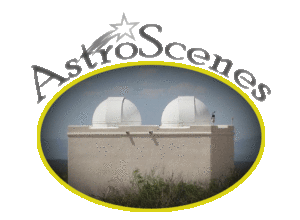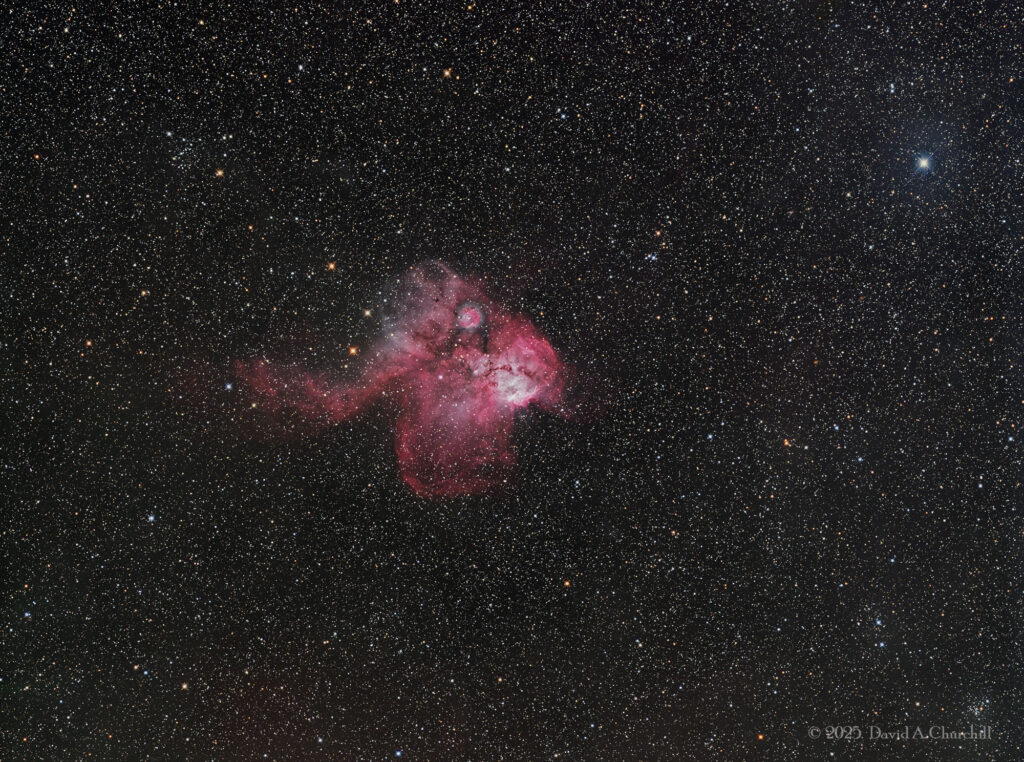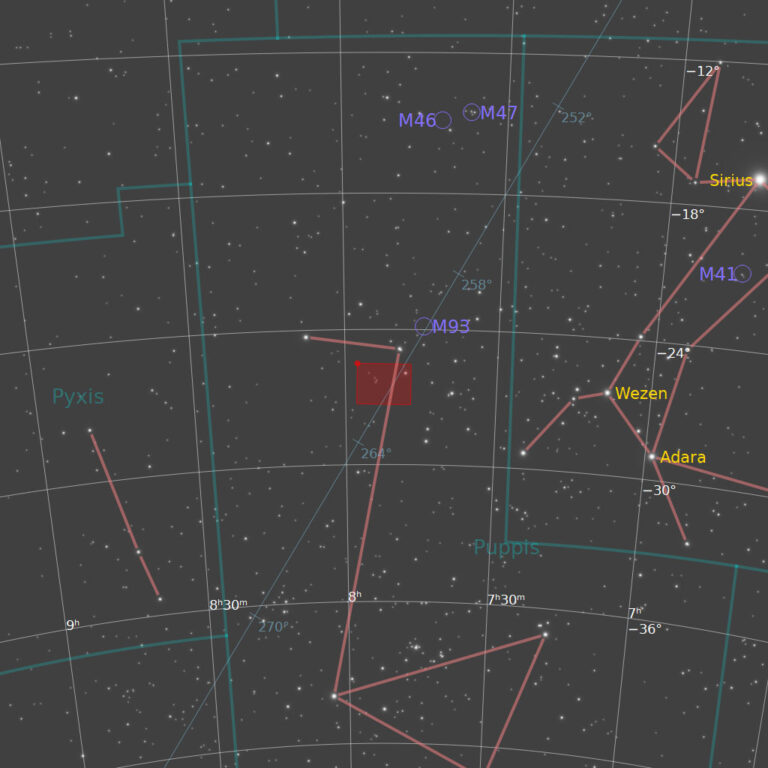Sh2-311 / NGC 2467
Skull & Crossbones Nebula. Emission Nebula & Open Cluster, Puppis
January 2025. Cave Creek Canyon Observatory, Arizona Sky Village
- Description
- Technical
- Links
Sharpless 2-311 (Sh2-311) is an emission nebula associated with the open cluster NGC 2467 in the southern constellation of Puppis. Nicknamed the “Skull and Crossbones Nebula”, it is a star-forming region whose appearance has occasionally also been likened to that of a colorful mandrill. It includes areas where large clouds of hydrogen gas incubate new stars.
NGC 2467 had long been considered to be the nucleus of the Puppis I association. However, NGC 2467 does not represent a distinct open cluster; rather, it represents a superimposition of several stellar groups along the same approximate line of sight that have distinctly different distances and distinctly different radial velocities. One of these is a young and very distant group beyond Puppis OB2, while another, nearer group with later-type stars lies at a similar distance as Puppis OB1. The region is dominated by a massive young star, HD 64315 of spectral type O6. Two stellar clusters also exist in the area, Haffner 19 (H19) and Haffner 18 (H18). H19 is a compact cluster containing a Strömgren sphere which is ionized by a hot B0 V-type star. H18 contains a very young star, FM3060a, that has just come into existence and still surrounded by its birth cocoon of gas. The age of H19 is estimated to be 2 Myr, while the age H18 is somewhat controversial, some considering it to be as young as only 1 Myr. The field contains other early-type stars such as HD 64568 whose relationship with the clusters is unclear.
It has been estimated that H19, H18, and the S311 nebula (in which lies HD 64315) are about 6.4 kiloparsecs (21,000 light-years), 5.9 kpc (19,000 ly), and 6.3 kpc (21,000 ly) away, placing them in the Perseus Arm of the Milky Way. A significant discrepancy has existed between the distances to these features estimated kinematically versus distances estimated photometrically. Regardless of these discrepancies, H19 and H18 may be considered to be a binary cluster.
NGC 2467 had long been considered to be the nucleus of the Puppis I association. However, NGC 2467 does not represent a distinct open cluster; rather, it represents a superimposition of several stellar groups along the same approximate line of sight that have distinctly different distances and distinctly different radial velocities. One of these is a young and very distant group beyond Puppis OB2, while another, nearer group with later-type stars lies at a similar distance as Puppis OB1. The region is dominated by a massive young star, HD 64315 of spectral type O6. Two stellar clusters also exist in the area, Haffner 19 (H19) and Haffner 18 (H18). H19 is a compact cluster containing a Strömgren sphere which is ionized by a hot B0 V-type star. H18 contains a very young star, FM3060a, that has just come into existence and still surrounded by its birth cocoon of gas. The age of H19 is estimated to be 2 Myr, while the age H18 is somewhat controversial, some considering it to be as young as only 1 Myr. The field contains other early-type stars such as HD 64568 whose relationship with the clusters is unclear.
It has been estimated that H19, H18, and the S311 nebula (in which lies HD 64315) are about 6.4 kiloparsecs (21,000 light-years), 5.9 kpc (19,000 ly), and 6.3 kpc (21,000 ly) away, placing them in the Perseus Arm of the Milky Way. A significant discrepancy has existed between the distances to these features estimated kinematically versus distances estimated photometrically. Regardless of these discrepancies, H19 and H18 may be considered to be a binary cluster.
Telescope: Planewave Delta Rho 350 f3.0
Mount: Astro Physics 3600GTO “El Capitan”
Camera: ZWO ASI461MM pro / EFW-7
Guider: ZWO OAG-L-68 / ZWO ASI174mm Mini
Filters: Astrodon II 50mm Sq LRGB
L: 78×5 mins = 390 mins, R: 46×5 mins = 230 mins, G: 32×5 mins = 160 mins, B: 25×5 mins = 125 mins
Total Imaging Time: 15h 05m
Data Imaged remotely on 14 nights during December 2024 & January 2025.
Data acquisition & Processing by David Churchill.
None


